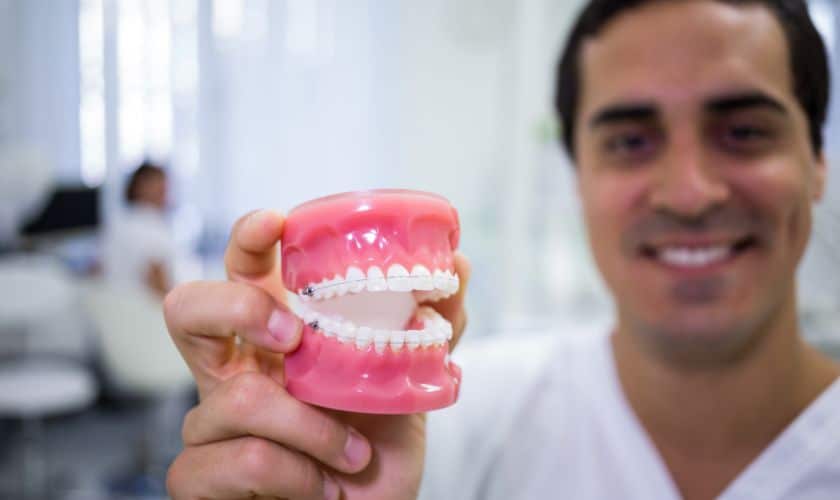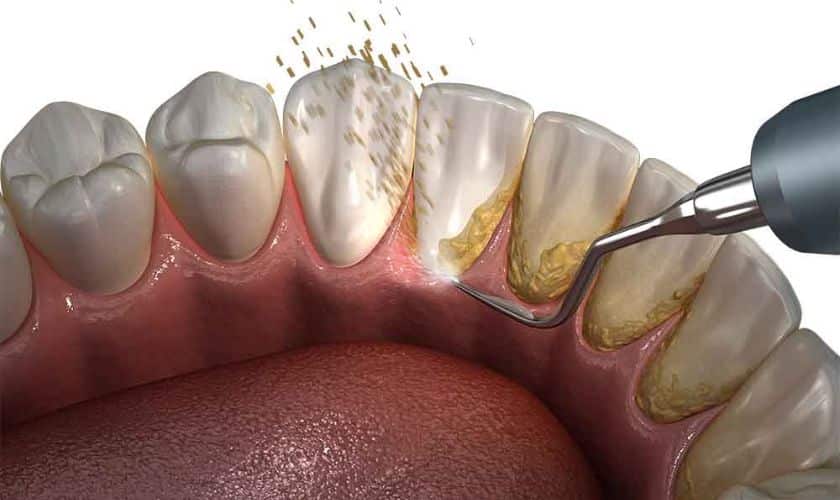
July 11, 2023
Are you tired of the constant battle against cavities and tooth decay? It’s time to seal the deal on preventive dentistry! Dental sealants may just be your secret weapon in fighting off dental problems before they even have a chance to take hold. Today, we’ll dive deep into understanding the advantages of dental sealants and discover how these tiny wonders can save you from endless trips to the dentist’s chair. Get ready to unlock the power of prevention and give your smile the protection it deserves!
What is a Dental Sealant?
A dental sealant is a thin, plastic coating that is applied to the chewing surfaces of the back teeth — the molars and premolars. Sealants protect these teeth from cavities caused by plaque and bacteria.
Sealants are most often used on children’s teeth, as they are more susceptible to cavities. However, adults can also benefit from sealants. If you have deep grooves in your teeth or if you are at increased risk for cavities, your dentist may recommend sealants for you.
Sealants are quick and easy to apply. The process usually takes less than 30 minutes. First, the dentist will clean your teeth and then dry them. Next, an acidic solution will be applied to the tooth surface to roughen it up so the sealant will adhere better. The acidic solution is rinsed off and your teeth are dried again. Then, the dental sealant is painted onto the tooth enamel in a liquid form. It quickly hardens into a protective shield.
You may not even know you have dental sealants because they become a part of your tooth and blend in with its natural color. Sealants typically last for several years before they need to be reapplied.
Good oral hygiene habits — brushing twice a day with fluoride toothpaste, flossing daily, eating a balanced diet, and avoiding sugary snacks — are still important when you have dental sealants.
Identifying Appropriate Candidates for Dental Sealants
When it comes to dental sealants, not all patients are ideal candidates. In order to determine if a patient is appropriate for dental sealants, there are a few key factors that need to be considered. First, the patient must have healthy teeth with no active decay. Second, the patient must have no history of allergies to adhesives or other materials used in dental sealants. The patient’s age is also a factor to consider – sealants are most effective when applied to teeth that are still developing (i.e. children and adolescents).
If you’re unsure if a patient is an appropriate candidate for dental sealants, always err on the side of caution and consult with a qualified dentist or healthcare provider before proceeding.
Important Factors to Consider Before Applying
When it comes to preventive dentistry, dental sealants are one of the most effective tools available for protecting your teeth. But before you go ahead and get sealants, there are a few important factors to consider. Here’s what you need to know:
The first thing to consider is whether or not you actually need dental sealants. If you have good oral hygiene habits and don’t have any existing dental problems, then you may not need them. However, if you have poor oral hygiene or are at risk for developing cavities, then sealants can be a good idea.
Another factor to consider is the type of sealant that’s right for you. There are two main types of sealants: resin-based and glass ionomer. Resin-based sealants are made of a plastic material that bonds to your teeth, while glass ionomer sealants are made of a ceramic material that adheres to your teeth. Both types of sealants are effective, but resin-based sealants tend to last longer (up to 10 years) while glass ionomer sealants may only last for 3-5 years.
Benefits of Dental Sealants
Dental sealants are a remarkable innovation in dental care that offer numerous advantages for both children and adults. Here are six key advantages of dental sealants:
1. Enhanced Cavity Prevention
Dental sealants provide an extra layer of defense against tooth decay. By sealing the deep grooves and fissures on the molars and premolars, they create a physical barrier that shields the teeth from bacteria and food particles. This significantly reduces the risk of cavities, particularly in vulnerable areas that are challenging to clean effectively with brushing alone.
2. Long-lasting Protection
Dental sealants are highly durable, offering long-term protection for teeth. With proper oral hygiene practices and regular dental check-ups, sealants can last for several years, effectively safeguarding teeth during their most vulnerable years.
3. Non-invasive Procedure
The application of dental sealants is a simple and painless procedure that requires no drilling or removal of tooth structure. The teeth are thoroughly cleaned, and the sealant material is carefully painted onto the chewing surfaces. This non-invasive approach is particularly beneficial for children who may feel anxious about dental treatments.
4. Cost-effective Dental Care
Dental sealants are a cost-effective preventive measure that can save individuals and families from incurring significant dental treatment expenses in the future. By preventing the need for fillings, root canals, or other invasive procedures, sealants offer substantial long-term savings on dental healthcare costs.
5. Improved Oral Health for Children
Children are more prone to tooth decay due to their developing oral hygiene skills and dietary habits. Dental sealants provide an effective preventive strategy during their cavity-prone years. By preserving their primary and permanent teeth, sealants contribute to the overall oral health and well-being of children.
6. Suitable for All Ages
While dental sealants are commonly associated with pediatric dentistry, they are equally beneficial for adults. Adults with deep grooves and fissures on their teeth can also benefit from sealants as an additional preventive measure against tooth decay and cavities, regardless of age.
What’s the Procedure for Applying Dental Sealants?
The initial step is to clean the tooth and eliminate any plaque or microbes. The dental specialist will then, at that point, draw the tooth, which roughens the surface to assist the sealant with sticking. After that, a thin layer of sealant is applied to the tooth and left to harden. The dentist will check to make sure there are no gaps or bubbles once it has hardened. The whole interaction generally takes under 30 minutes.
Long Term Care and Maintenance of Dental Sealants
Dental sealants are a preventive measure that can be taken to help avoid tooth decay. Sealants are a clear or white material that is applied to the chewing surfaces of the back teeth, where decay is most likely to occur. The sealant bonds to the tooth and creates a barrier, protecting the tooth from plaque and bacteria. Sealants can last for several years and need to be checked annually by your dentist or hygienist to ensure they are still intact.
Good oral hygiene habits at home are also important in maintaining dental sealants. Brushing twice a day with fluoride toothpaste and flossing daily will help remove plaque and bacteria from teeth and keep sealants effective. If you have any questions about how to care for your dental sealants, be sure to ask your dentist or hygienist at your next appointment.
Alternatives to Dental Sealants
When it comes to preventive dentistry, there are a number of different options available to patients. While dental sealants are one of the most effective ways to protect teeth from cavities, there are some alternative options that may be more appropriate for certain patients. Here is a look at some of the alternatives to dental sealants:
1. Fluoride treatments
Fluoride is one of the most effective ways to prevent cavities and can be used in a number of different ways. Patients can use fluoride toothpaste, mouthwashes, and gels, and can also get professional fluoride treatments at their dentist office.
2. Dental bonding
Dental bonding is another option for preventing cavities. This procedure involves using a composite resin material to fill in any cracks or pits in the teeth. This can help to prevent bacteria from entering the teeth and causing decay.
3. Pit and fissure sealants
Pit and fissure sealants are another type of dental sealant that can be used to prevent cavities. These sealants are applied to the deep grooves in the back teeth and can help to fill in any spaces that might trap food or bacteria.
4. Water fluoridation
Water fluoridation is another way to prevent cavities by providing fluoride through the water supply. This helps to ensure that everyone has access to this important cavity-preventing mineral.
Conclusion
Dental sealants are a reasonable and powerful method for safeguarding your teeth from rot and the capability of additional difficult issues. You will be in a better position to decide whether or not this preventive dentistry practice is right for you if you have a solid understanding of the fundamentals of dental sealants. Assuming that you’d like extra data on the benefits of dental sealants, contact your dental specialist to examine it in additional detail. Keep in mind that taking preventative measures to ensure good oral health throughout one’s lifetime pays off.
Recent Posts

Top Benefits of Using a Sedation Dentist in the Portland Area

Missing Teeth? How Dental Implants Can Restore Your Smile

Oral Cancer and Dental Professionals: The Frontline of Defense

Fresh Breath Quest: Knowing When to Seek Dentist Help for Bad Breath

